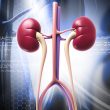Ischemic stroke is the main reason behind disability in the world, and it is often followed by death. The rupture of carotid atherosclerotic plaque and its embolization are the main cause of this entity. Different randomized studies have shown that carotid endarterectomy is beneficial in symptomatic patients with 70 to 99% carotid obstruction, but we...
Spontaneous Coronary Artery Dissection: Are There Differences Between Men and Women?
Spontaneous coronary artery dissection is one of the causes of acute coronary syndrome, with a prevalence between 1 and 4%, that might reach up to 35% in women <50 years old, according to recent studies. As dissections are more frequent in women, research focuses on this population. Small retrospective studies have shown different triggers and predisposing...
Angiographic Quantitative Flow Ratio-Guided Coronary Intervention: Promising Results at 2 Years
Functional assessment of coronary artery lesions with fractional flow reserve (FFR) or instant wave-free ratio (IFR) have shown improvement of most symptoms and clinical outcomes of patients with stable CAD. However, these tools recommended by the current guidelines increase procedure complexity, risk and cost. This is why the angiographic quantitative flow ratio-guided coronary intervention (QFR)...
Patients with INOCA in the ISCHEMIA Trial
There has been an increase in the diagnosis of patients with proven ischemia who did not present obstructive coronary lesions (defined as the absence of stenosis ≥50%), called ischemia with non-obstructive coronary arteries (INOCA). These patients are at a higher risk for major adverse cardiac events (MACE) compared with the rest of the population. The...
The New Sirolimus Eluting Balloons Are Also Effective
The technological development of drug eluting stents has allowed us to treat increasingly complex patients, with around 10% stenosis and using more, and longer stents. This situation generates a great challenge: keep using stents or use paclitaxel coated balloons (PCB). At present, there are sirolimus drug coated balloons (SCB), but we do not have enough...
Use of OCT FFR on ACS Clinical Outcomes
Patients undergoing acute coronary syndrome (ACS) benefit from percutaneous coronary intervention (PCI). At present, there is no question about this. However, residual ischemia after PCI is associated with a worse prognosis. Angiography studies and intravascular imaging are useful to assess post intervention outcomes, but they are limited when it comes to the physiological assessment of...
TEATE Trial: Urine Alkalinization as a Target to Prevent Contrast-Associated Kidney Injury
Acute kidney injury related to iodinated contrast significantly increases morbidity and mortality after angiography or angioplasty. According to registries, its prevalence can vary from 2% in low-risk population to up to 50% in high-risk subjects. Its risk factors include previous renal failure, diabetes, age, and the amount/type of contrast used. As a preventive measure, international...
Devices to Prepare Severely Calcified Lesions: Is There a Difference When Assessed by Intravascular Imaging?
Severely calcified coronary lesions are found in 25% of patients undergoing PCI, and their presence has a negative impact in long term outcomes. These lesions difficult stent expansion and increase device failure rate, even when using the latest generation of drug eluting stents (DES). This is why there is an interest in lesion preparation strategies...
TCT 2022 | BYPASS CTCA
Studies have shown that the use of computed tomography cardiac angiography (CTCA) prior invasive coronary angiography (ICA) in patients with prior cardiac artery bypass graft (CABG) might reduce procedural time and post procedure kidney injury. 1 out of 5 patients with ischemic cardiomyopathy and prior CABG need to be assessed with ICA within 3 years...
Mortality and Bleeding in Access Site Choice: Systematic Review
In 1992, Kiemeneij performed the first transradial coronary procedure, following Campeau’s description of that access in 1989. It’s been 30 years since that milestone in interventional cardiology. Over time, the number of procedures conducted with this approach has increased exponentially, and it is the main approach in most centers in different clinical scenarios. Historically, the...









